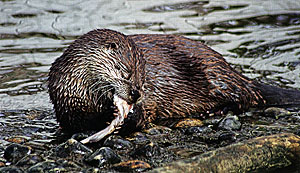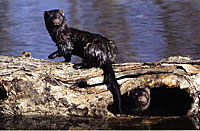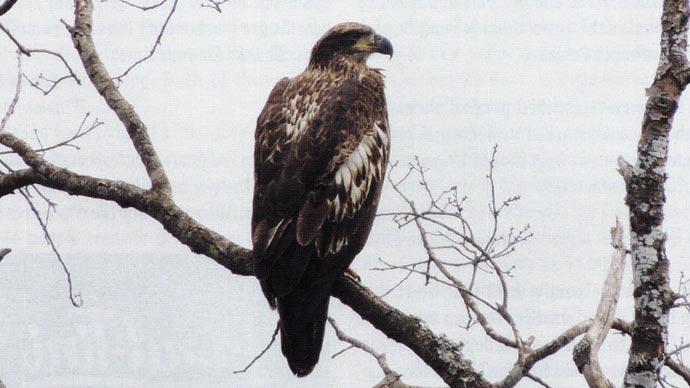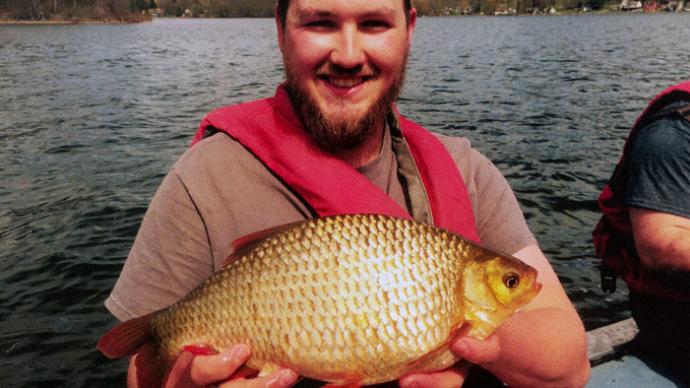
I paid my spring semester college tuition each year trapping fur on big Atlantic Coastal marshes. The usual catch was 500 muskrats, 100 beavers, seasonal limit of otters and more nutria than I wanted to count. Living in a major estuarine environment, I grew up recognizing the importance of furbearers to healthy wetlands and waterways. I also learned the need for population control in maintaining balance of those fragile ecosystems. Now, I am too busy and too old for longline trapping, so I just tell people how to do it and explain why they need to!
Aquatic furbearers... fur producing mammals that complete their life cycle in or near water. Most have specialized glands that produce waterproofing oils along with outer guard hairs that protect inner fur layers. All have secretions from musk or anal glands that aid in tracking and identifying each other in water, mud or moist soils.
The three most common aquatic furbearer nuisance animals belong to the order Rodentia. Beaver, nutria and muskrat are aquatic rodents that share similar appearances and habits. They can be positively identified by size and shape of their tails. Beavers have large, horizontally flat tails; nutria have long, round, tails; and muskrats have long, vertically flattened tails.
During winter, beaver and nutria depend heavily on the cambium layer of softwoods like willow, cottonwood, sweetgum, pine and most fruit and nut trees. During summer, herbaceous aquatic plants, semi-aquatic grasses, sedges, cattails, water lilies and various small trees are the primary diet. Muskrats eat cattails, pickerelweed, bulrush, smartweed, white water lily, sedges, spatterdock, willow, duck potato, wild rice, milfoil, coontail, duckweed and the bark of small tree sprouts of the area.
As you can see, all three may compete with fish and visiting waterfowl for aquatic food and cover.
Nuisance furbearers respond to abundant plant forage and higher water levels (improved habitat) by increased reproduction. Although beaver families limit themselves to an average of 3.5 babies per year, muskrat and nutria are capable of producing 5 to 7 litters of 6 babies, annually. Like other rodents, resulting population explosions are indicative of more than adequate habitat/food conditions at the time, but will soon return to base numbers when resources are depleted.
The three most common aquatic furbearer predators belong to the weasel family and are found, at least occasionally, in all lower 48 states and Alaska. Weasels, mink and river otter are true carnivores that take advantage of high-density prey populations in and near our wetland systems.
Weasel diet includes rodents, small mammals, birds and insects. Minks eat muskrats, upland game birds/animals, waterfowl, fish, mollusks, reptiles, insects and eggs and scavenge on fresh carcasses. Otters generally feed in shallow water, swimming on the surface until spotting fish beneath. Although fish is the principal food, most species taken are non-game forage fish (sunfish, carp, catfish and suckers). Otters also favor mussels, crayfish, crabs, frogs, turtles, snakes, salamanders, worms/insects and rodents on the shoreline.
As with most predator populations, these furbearers are strongly territorial and highly self-regulating. Weasels average 4-6 young per annual spring litter; minks average 3-5 young per annual spring litter and the average litter born to otters in late winter is only 2 or 3 young.
It is usually in fall/early winter when we first acknowledge that these critters are busy working in and around our ponds and lakes. They have been there for awhile but nocturnal behavior, along with hidden daytime travel through summer vegetation, only provides us with an occasional glimpse of actual populations. As temperatures cool, vegetation dies off and human recreational activities subside, signs and sightings become more frequent. By midwinter, we are well aware of furbearer impact on our waterways and wetlands and need to assess degree of animal damage and subsequent control. If furbearer population control is needed, now is the time to do it.

How much damage can we live with and what necessitates aggressive control practices? We are all aware of the reproductive capability of rodents with unlimited food supply. Beaver and nutria behavior can be most destructive in the process of bank burrowing, dam building and tree cutting or flooding. It is no secret what a small family of beavers can do to those special ornamental trees near your ponds. Muskrats are less offensive in conservative numbers but often compromise integrity of dams and levees by tunneling.
There are several scientific methods for visually indexing nuisance aquatic furbearer populations, but control is best accomplished as soon as there is evidence of damage. Once colonies become established, controlling them can be difficult and costly. Wildlife managers need to continually of tunneling or burrowing. Indications of their presence would also include fresh floating vegetation cuttings, tree girdling, slides and dam or lodge construction.
On the other hand, any negative impact from aquatic furbearer predators should be evaluated on a totally different level. Predator- prey relationships are complex and usually location specific. Notable studies throughout the last century clearly demonstrated wild prey species (includes gamefish) thrive where habitat conditions are ideal and presence of predators has comparatively little effect on size of their total population. Furthermore, scientists concluded the greatest limiting factor affecting game populations within a defined area was food. Significant losses to predation tend to be borne by surplus prey.
That means natural predation from weasel family furbearers rarely threatens pond wildlife or fisheries, but more often serves as "checks and balances" for healthy population densities. If you have a population problem with any portion of gamefish production, look at environmental conditions first ... blame furbearer predation last.
The river otter is commonly persecuted for damage to gamefish based on unsubstantiated claims of excess killing and wanton waste. Over the years, fisherman have waged war on the otter, but countless studies prove that they are actually beneficial to gamefish production by eating carp, suckers and sunfish that feed on gamefish eggs. As a life-long trapper, I have great respect for these cunning animals and their ability to "manage" a territory wisely. It makes no evolutionary sense for any predator to recklessly deplete its food source.
We need to use discretion determining when natural predation/depredation turns unnatural and is no longer acceptable within our individual operation. Neither can we allow emotion or personal preference to prejudice such evaluations. However, if you have responsibly determined that some control is necessary, options for damage prevention and control of all aquatic furbearers are: live traps, leghold traps, Conibear killer traps, snares and shooting.
Live trapping, while appearing most humane, is ultimately ineffective most of these animals travel great distances to return to home territory or you are just passing your problem on to a neighbor. Snares and leg hold steel traps equipped with downer rigs work well when used by experienced trappers only. Because aquatic furbearers are primarily nocturnal, I don't advocate shootinc, as a means of control. Besides serious safety implications of spotlight shooting on water, it usually only takes one event to educate these animals on how to duck a bullet.
The most efficient method of selective removal is a Conibear style killer trap. They work while you sleep. The Conibear is functional in both shallow and deep water and dispatches catches immediately and humanely. With the aid of a mechanical trap setter and a few initial instructions from an experienced trapper, landowners can quickly learn to set the Conibear in underwater tunnels or at lodge and den entrances. Conibear traps come in three sizes to match the size of target animals.
Because in this audience we are dealing with defined wildlife areas containing small pond/lake systems rather than the vast coastal marshes of my youth, we should assess animal damage and need for control on a "per case" basis. There is no all-comprehensive formula by which the role of predation/depredation and population dynamics of wildlife may be expressed.
Accept aquatic furbearers as part of a natural wetland ecosystem and tolerate as much of their behavior as is reasonable.
The goal of an accomplished wildlife manager is not to completely eliminate predators and/or nuisance animals, but to regulate their populations within acceptable limits. When we choose to manipulate natural wildlife environments, we must likewise assume responsibility for regulating population and behavior imbalances that result.
Dan VanSchaik is a nationally known, well respected private sector wildlife biologist. He can be reached at danv@texoma.net.
Reprinted with permission from Pond Boss Magazine



